It Takes a Village: The Support Crew Behind the 861 Mile Race Across the West
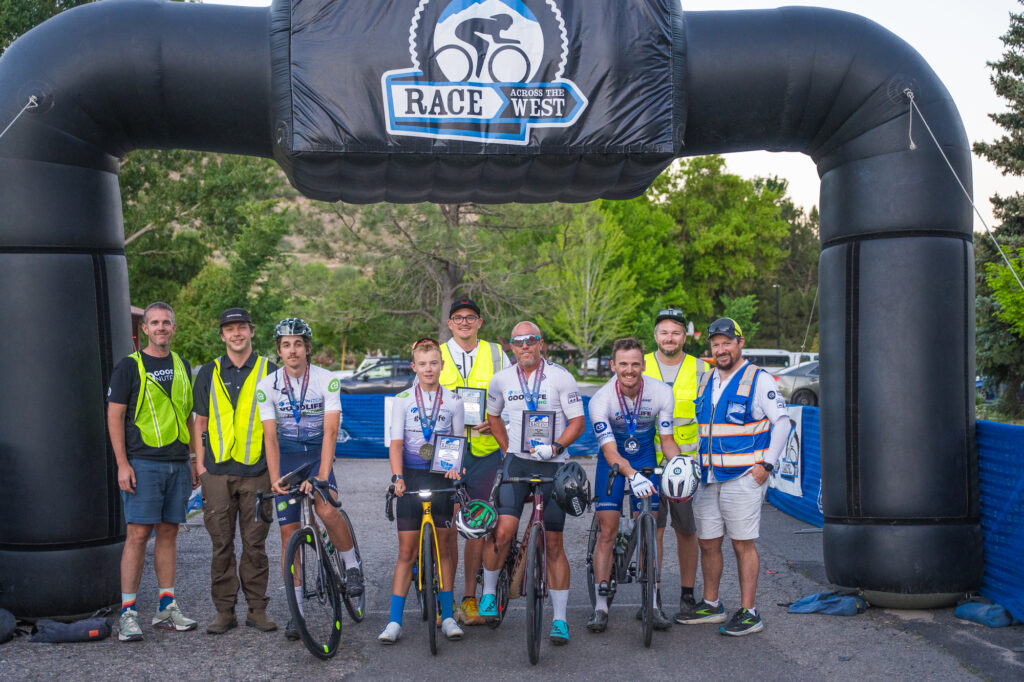
Celebrating the 4-man team win with the crew. Photos: Kevin Mackinnon
After 861.6 miles and two days, seven hours and 30 minutes of riding, the Slowtwitch Goodlife Racing team reached Durango, Colorado last Thursday night. We were on hand to capture images from the incredible race that follows the first part of the Race Across America – you can see many of those in the link below.
When you’re riding a bike for the better part of three days and two nights you need an abundance of support, and there was lots of that on hand for the four riders on the team: Greer and Shane Peed, Eli Cullison and Jordan Reed. There were three vehicles for the ride – an RV, a “Rex Rover” and a van. In those vehicles providing support were crew chief Terry Wilson and mechanic Vincent Wieser. Slowtwitch’s Eric Wynn and Nick Munger were on hand for logistics and lots of driving, while Chef Zach Midgett was on deck for meal prep and also got roped into lots of driving, too.
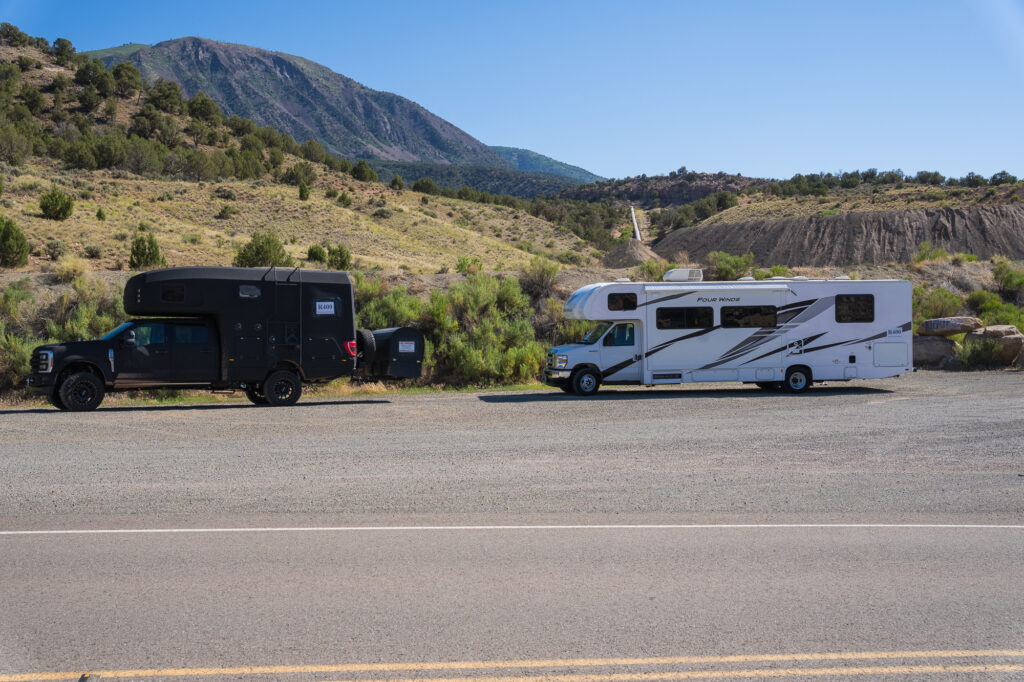
The Rex Rover and the RV stop to refuel the riders.
As tough as riding a bike for a few hundred miles is, acting as part of the support crew isn’t exactly a walk in the park. There’s a lot more driving than 861 miles to be dealt with – for the unlucky few who ended up in the RV on Wednesday afternoon and evening, there was a long drive around the mountain passes to get back onto the course near Flagstaff, Arizona. (It was very disheartening to see the maps app on my phone go from telling me I was 60 miles from Flagstaff, then point out a few hours later that I was suddenly 120 miles away.) Then there’s sleep, or lack there of. With a pair of riders coming in at roughly 1:30 am, you have a couple of people from the trail vehicle who also need to be fed. (Can you say late night, early morning for Chef Zach?) Crew chief Terry Wilson pretty much spent the entirety of the trip in the follow van – he was in it for all of the riding, then rolled out a mattress and slept in it at night.
Despite the uncomfortable sleeping arrangements – with 10 people to somehow coordinate into six beds, there were a few who spent a night or two either in the back seat of a truck, or on the floor of the RV – the crew managed to stay on top of things throughout the entire race. (Not that people weren’t tired afterwards – reports are that lots of people were exhausted this weekend!)
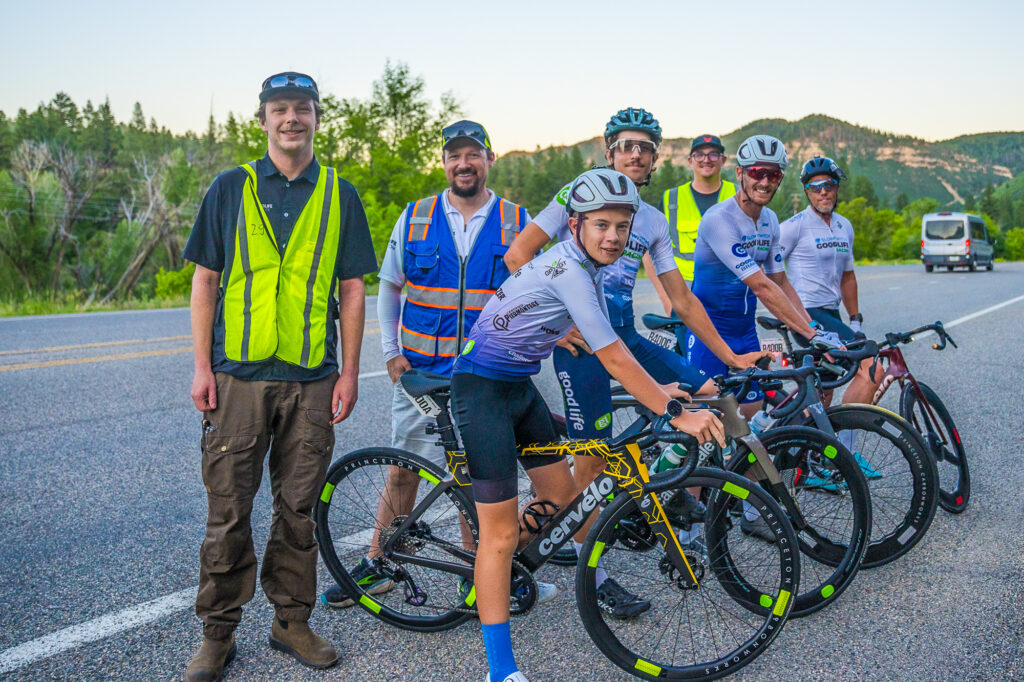
All the tough stuff was quickly forgotten, though, when the four-man team got together for the final few miles of the race. As the riders all got out at the Durango city limit for the final four miles of riding, there was a tangible sense of relief for the crew who had worked so hard to help make all this happen.
From Oceanside to Durango
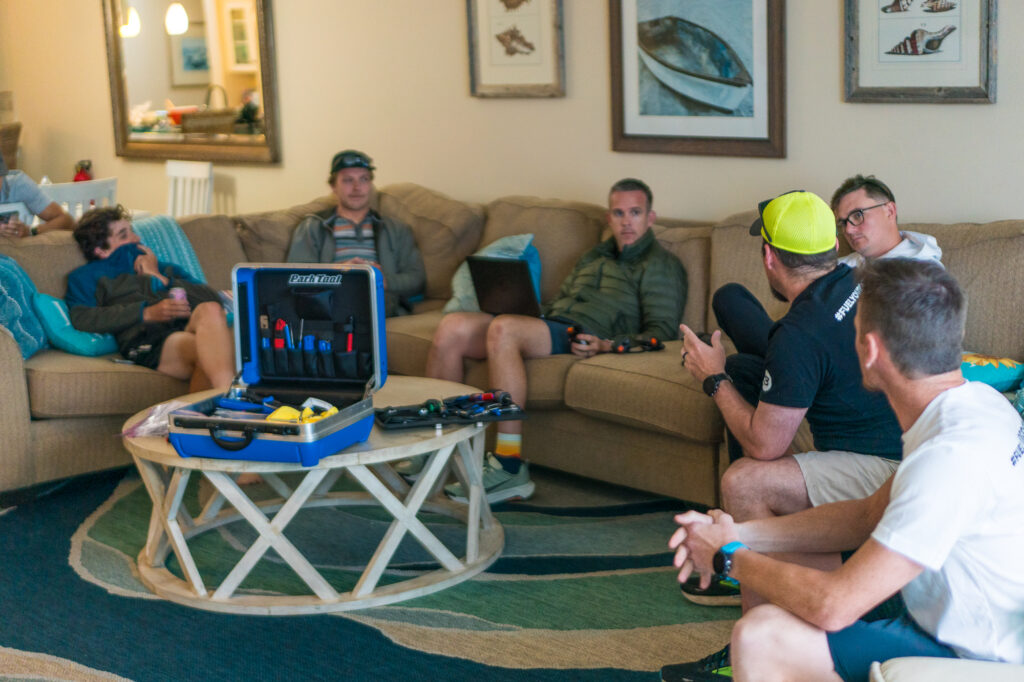
The crew gets together before the race starts for a final run through of the logistics.
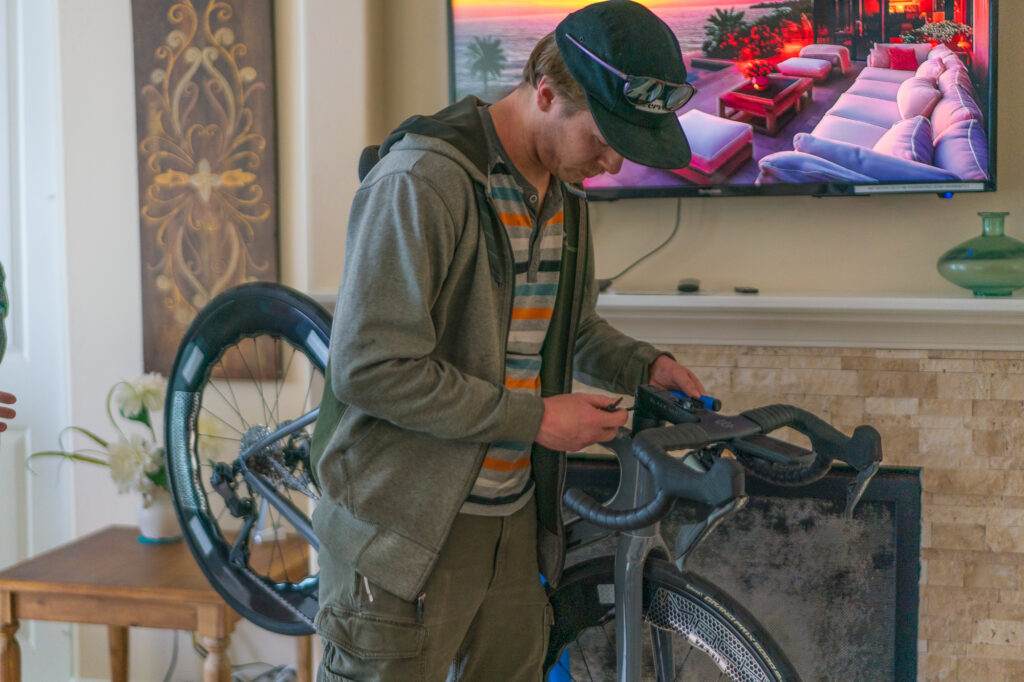
A final look at the bikes before the race start …
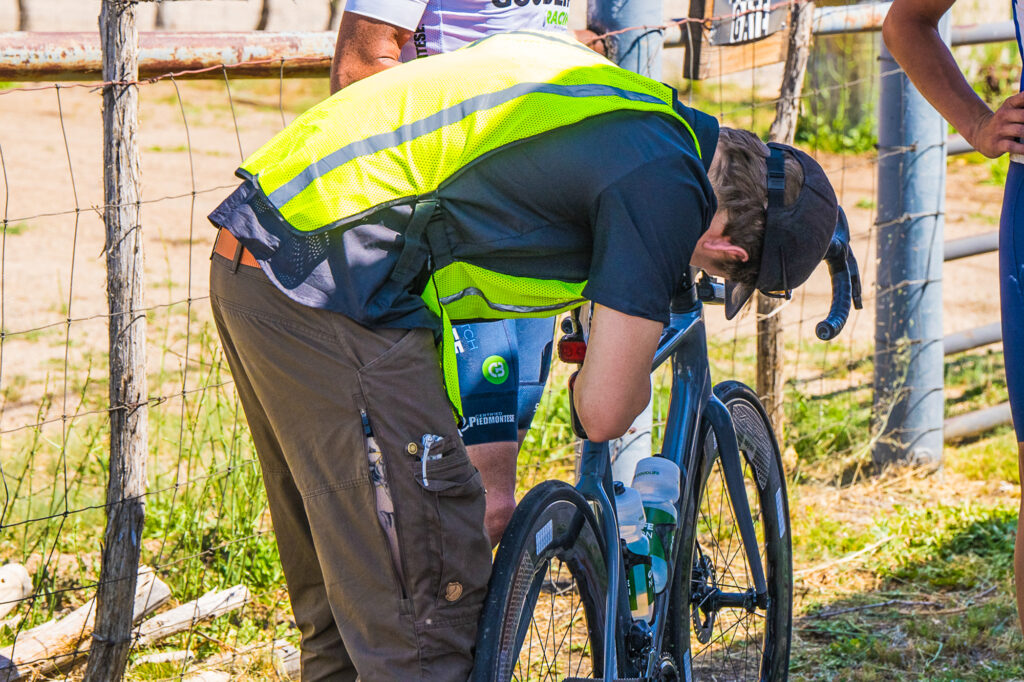

And lots more attention required through 861 miles of riding.
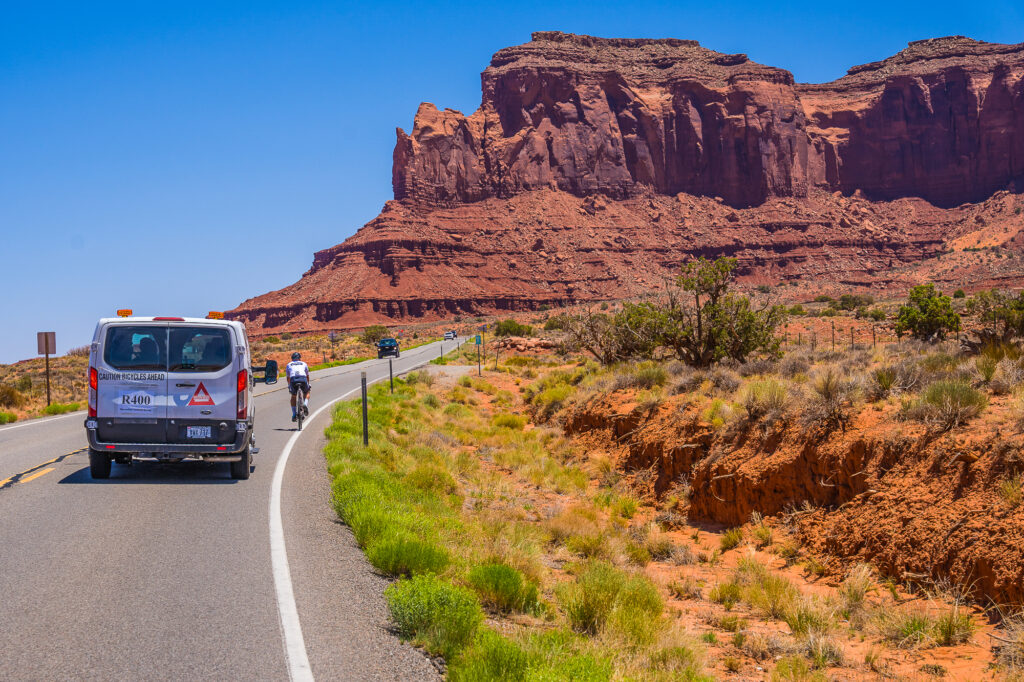
In addition to the required “direct follow” at night (see below), on certain parts of the course it’s also required for the trail vehicle to be right behind the rider. It’s a long, slow grind with lots of time in first or second gear.
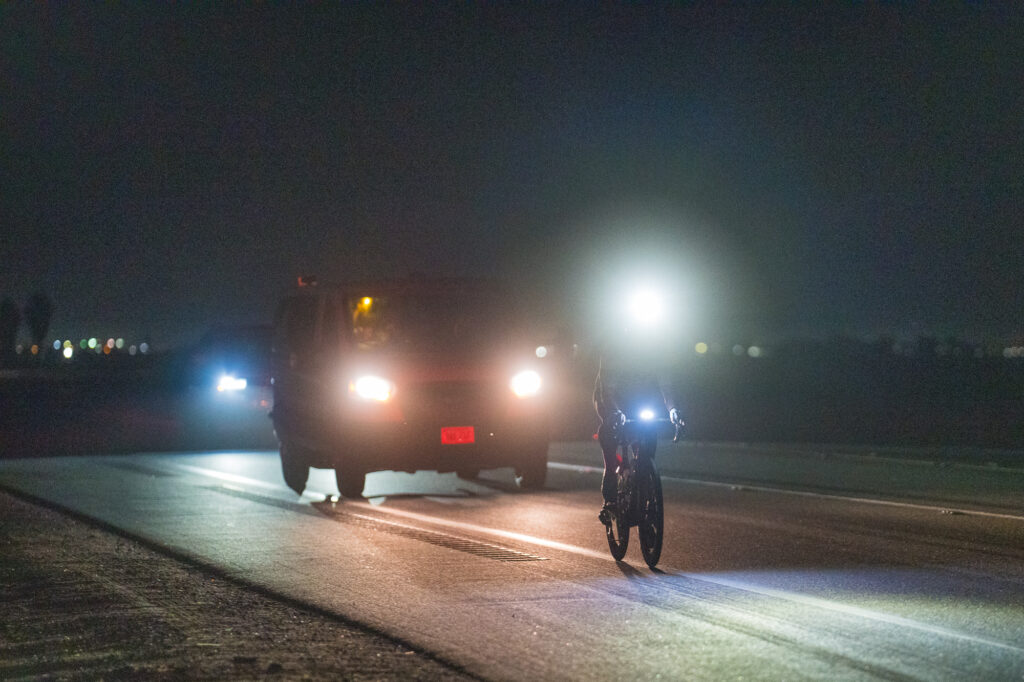
The racers went until about 1:30 am each night, with the next crew starting at sunrise, which was roughly 5:30 am.

At other times it was mandatory to “leap frog” past the riders – some counties don’t allow direct follow.
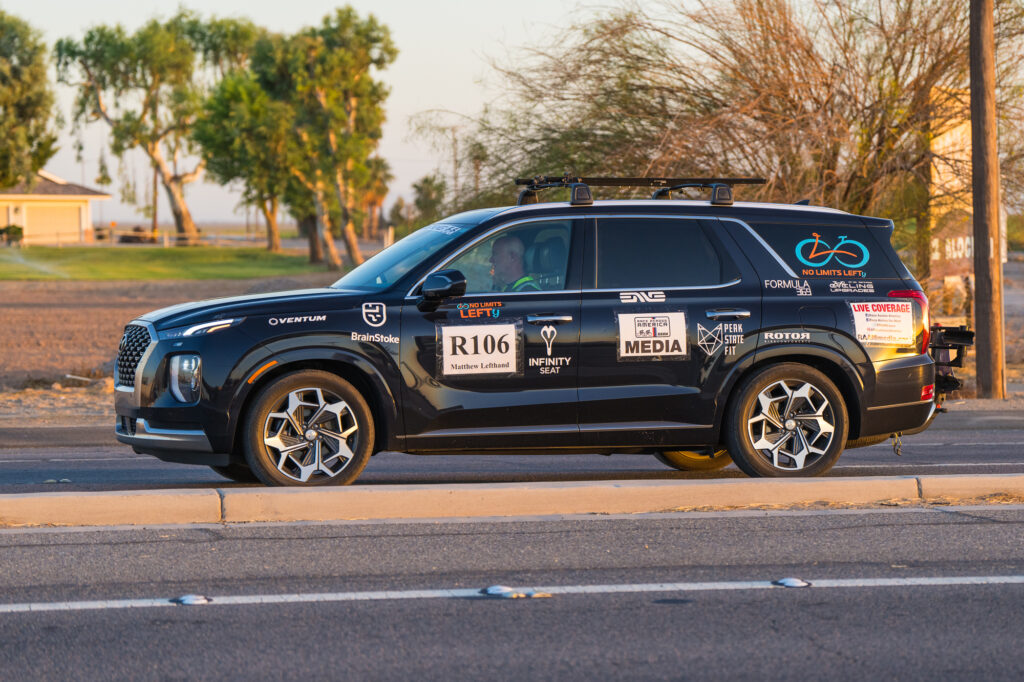
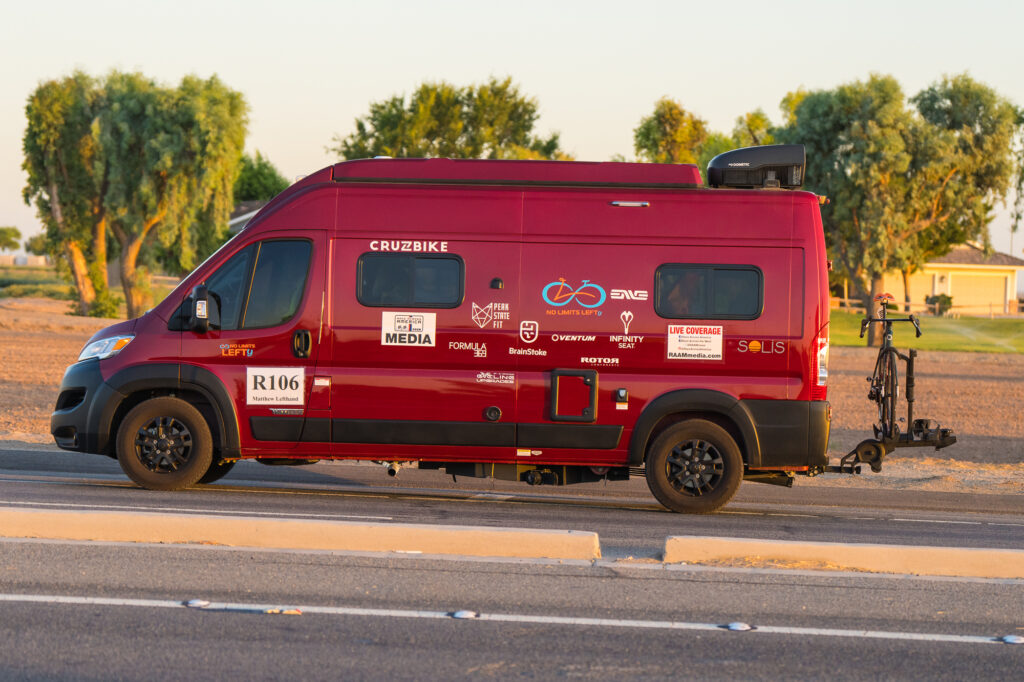
Matthew Lefthand, who won the Race Across the West solo division, would set a new course record for his efforts. He had two vehicles supporting his ride.
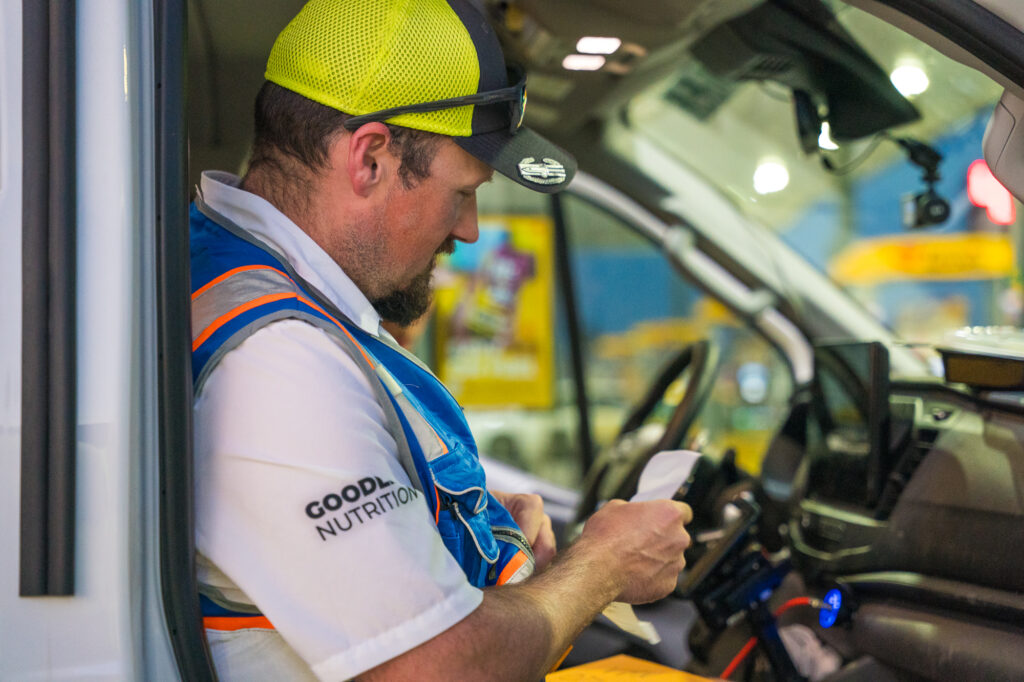
Crew chief Terry Wilson spent a crazy amount of time in the van …
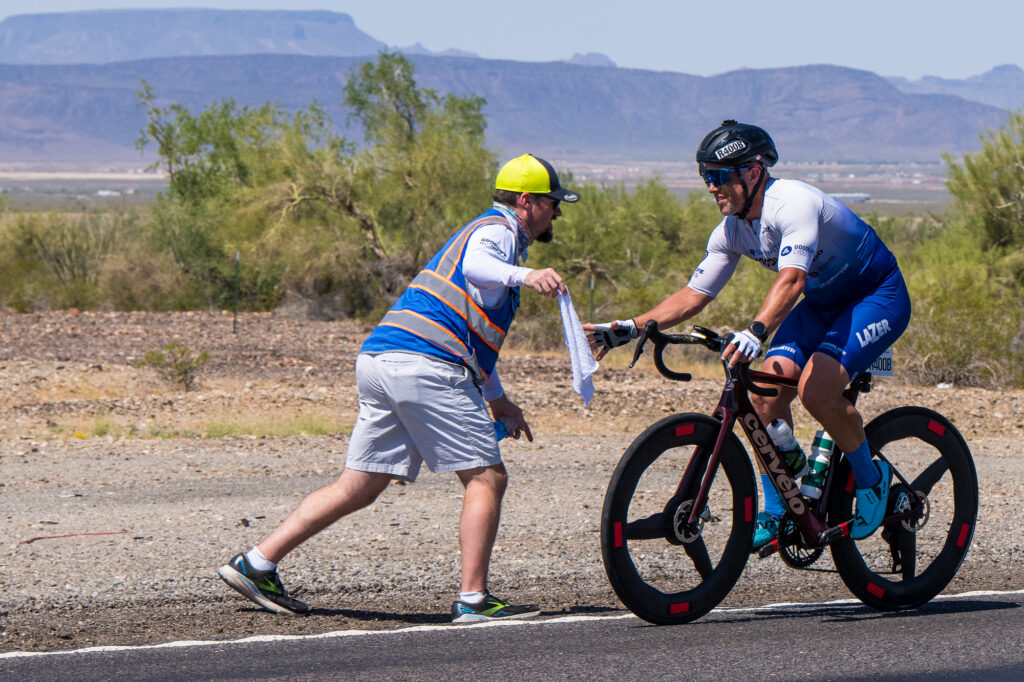
But also found himself on wet towel duty as he tried to help the riders through one brutal stretch of highway in the desert where the temperatures got to well over 110 degrees.
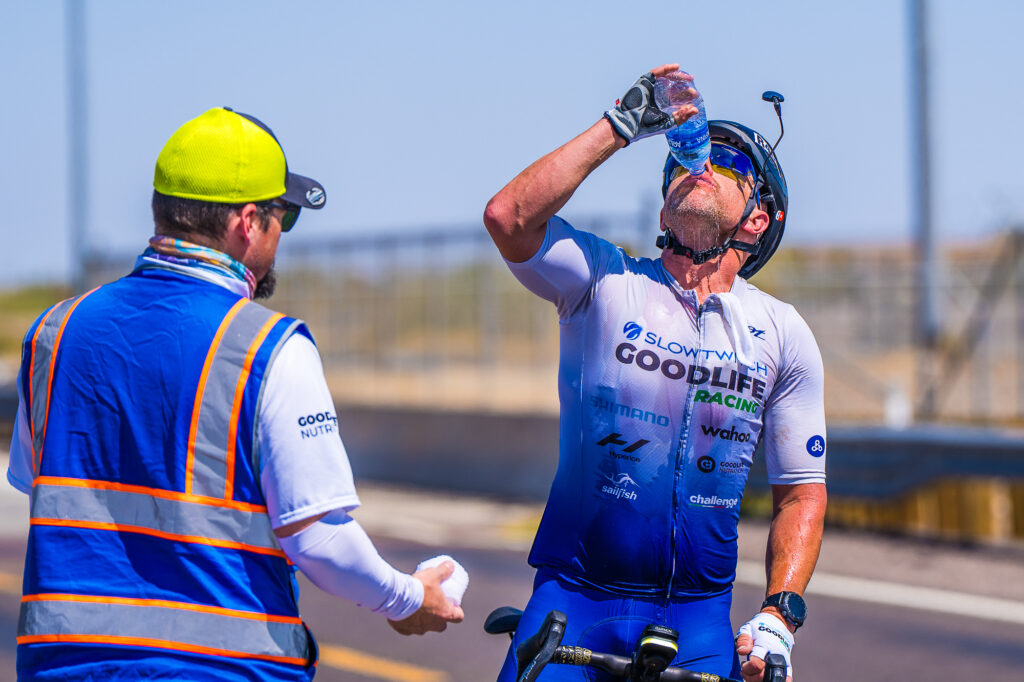
Getting water and electrolytes to the riders was a non-stop process during some of those desert stretches.
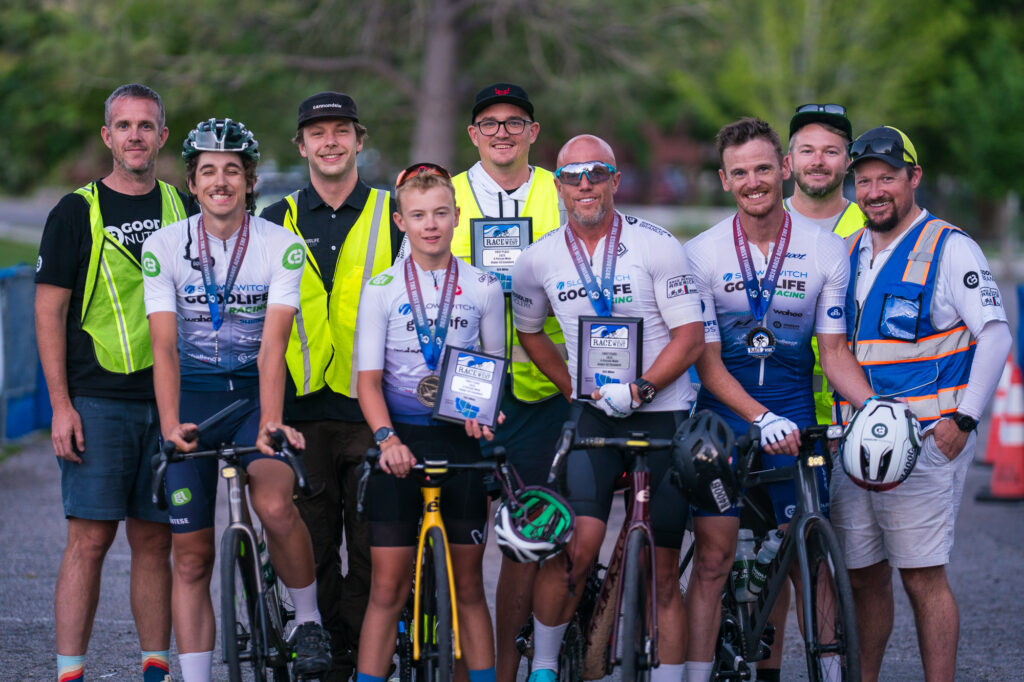
All smiles after a successful race.
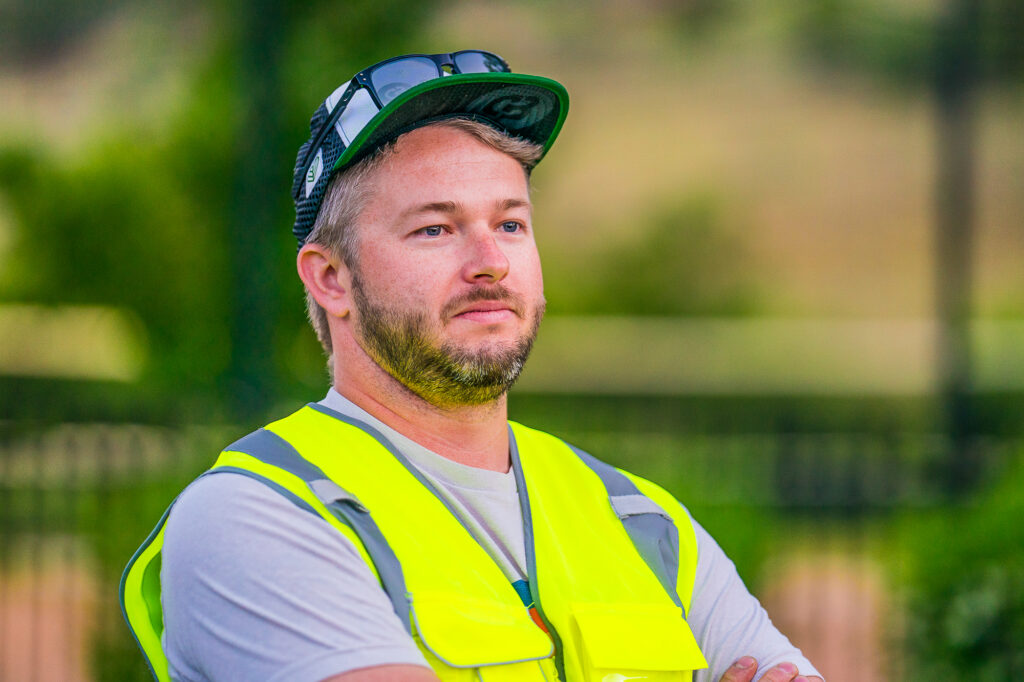
Is Chef Zach smiling because he’s not on deck for dinner tonight?
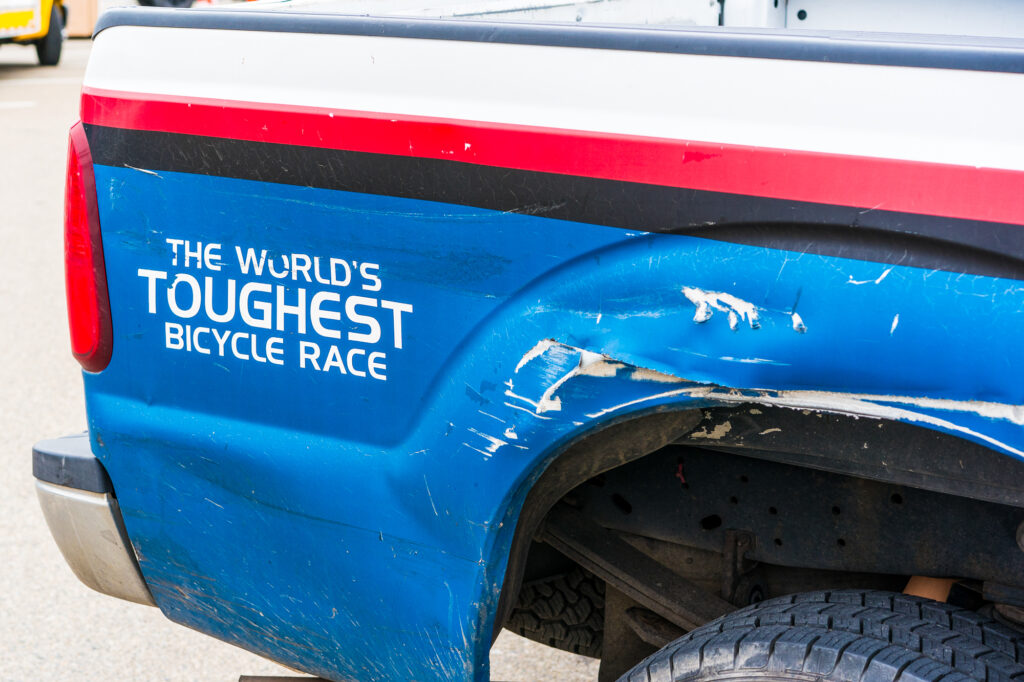
No arguments here – the Race Across the West was tough enough. RAAM takes things to a completely different level.
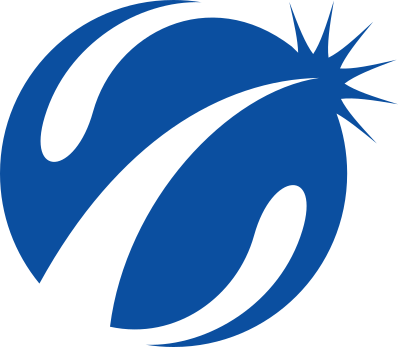



Just curious…
Why did the riders have to take a shuttle from the Sedona High School to the overlook at the head of Oak Creek Canyon? Folks around here ride that area fairly regularly…
It’s more of the “Support” vehicle issue… Because Sedona is SO crazy busy it’s best for them to just bypass that entire section. I missed it last year as we had to take to RV around Sedona to get straight to flagstaff… But this year I was in the van. having RAW and RAAM ride thru that section would have been a massive cluster… Although I can see why people want to ride that part… It’s very scenic.